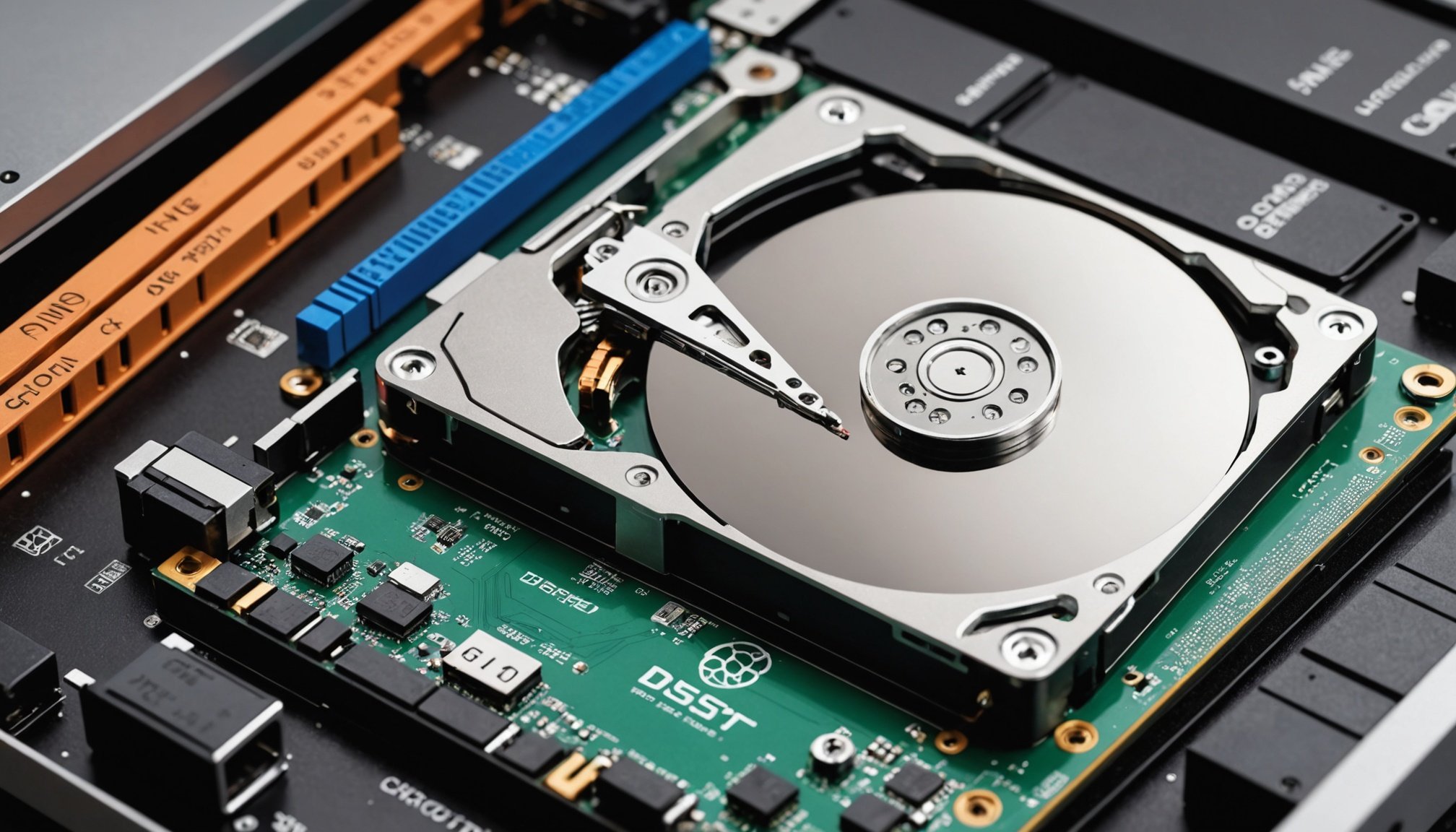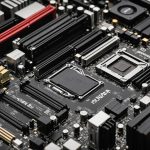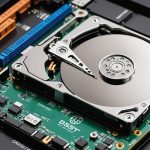Benefits of Installing an Operating System on an SSD
The decision to install an operating system (OS) on a Solid State Drive (SSD) comes with substantial advantages. SSD advantages are most evident when considering the enhanced boot and load times that they provide over traditional hard drives. Typically, starting up your computer and loading applications on an SSD can be reduced to mere seconds, enhancing system performance dramatically.
Furthermore, the installation of an OS on an SSD results in improved overall system responsiveness. Application startup times become significantly faster, offering a seamless user experience whenever launching software. This improvement directly contributes to the efficiency of carrying out everyday computing tasks.
In parallel : Top considerations for selecting the perfect motherboard for your high-end pc build
In addition to these aspects, SSDs also facilitate better multitasking capabilities. With improved data access speeds and lower latency, users can switch between multiple applications without experiencing the lag customary with hard drives. This capacity leads to increased productivity, especially in environments where time and efficiency are crucial.
Opting for an SSD for your OS installation yields a noticeable performance boost across all aspects of computer use, from rapid startups to handling resource-intensive applications smoothly. Thus, the move to an SSD is not just about speed, but about elevating the overall computing experience.
Also to see : Top tips to boost pc case airflow for optimal cooling efficiency
Comparison of SSDs and Traditional Hard Drives
When comparing SSDs vs HDDs, the advantages of each storage technology become apparent particularly in terms of speed and performance. Let’s explore why SSDs often come out on top in these areas.
Speed and Performance Differences
SSDs significantly outperform HDDs in terms of speed. Traditional hard drives rely on spinning disks to read and write data, introducing latency. In contrast, SSD storage technology uses flash memory, which allows for instantaneous data access. As a result, booting up and loading applications is noticeably faster with SSDs, enhancing overall performance comparison.
Reliability and Durability
Durability is another factor where SSDs demonstrate superiority. With no moving parts, they are less susceptible to physical shock and have a longer lifespan under normal conditions. Failure rates for SSDs tend to be lower compared to HDDs, making them a more reliable option for everyday use.
Cost Considerations
Despite their higher initial cost, SSDs have seen a downward trend in price over recent years. This makes them a more accessible option for consumers. However, HDDs still offer more storage capacity per pound, which might appeal to users with bulk data storage needs.
Ultimately, the shift towards SSDs is driven by their remarkable advantage in performance and evolving affordability.
Longevity and Reliability of SSDs
Solid State Drives (SSDs) have increasingly become known for their reliability and extended lifespan compared to traditional hard drives. Several factors, including wear leveling, impact the longevity of an SSD. Wear leveling is a technique to extend lifespan by distributing program and erase cycles evenly across the memory, preventing premature failure of cells.
SSDs also offer superior data integrity, a crucial aspect for users who store critical data. Their design with no moving parts reduces the risk of damage from mechanical failure. This characteristic makes them exceptionally robust and well-suited for environments where physical shocks are a concern.
To maximise an SSD’s lifespan, users should consider avoiding frequent defragmentation, which is unnecessary and can wear out the memory cells. Additionally, keeping the drive under 70% capacity ensures optimal performance without straining the memory cells.
Common myths suggest that SSDs can fail suddenly; however, modern drives often incorporate features such as error-correcting codes and over-provisioning to enhance reliability. Understanding these aspects dispels misconceptions and positions SSDs as a trustworthy storage solution for both personal and professional use.
Step-by-Step Guide to Installing Your OS on an SSD
Installing your operating system (OS) on an SSD can vastly improve your system performance, providing quicker boot and load times. To ensure a smooth OS installation, there are a few prerequisites you’ll need to check off first.
Before beginning the installation guide, ensure your SSD is properly connected to your computer and has sufficient storage capacity. It’s wise to backup all essential data from your existing OS environment to avoid loss. You will also need an installation medium, such as a USB or installation disc, for your OS.
Deciding between cloning your current OS or a fresh installation is crucial. Cloning involves copying your current OS and data to the new SSD, preserving your settings, and applications. This method requires tools like software cloning utilities, which make the transition seamless.
For those who prefer starting anew, a fresh installation might be more suitable. This process involves installing a clean copy of the OS onto the SSD, which can enhance system speed and eliminate unnecessary files and bugs.
Several software tools, such as cloning software for seamless transfer or OS installers, can streamline the setup process, ensuring your SSD is optimally configured for superior performance.
Real-World Performance Benchmarks
When assessing the performance benchmarks of Solid State Drives (SSDs), diverse speed tests and user testimonials offer insightful perspectives. These benchmarks offer an objective way to understand how SSDs enhance computing experiences compared to traditional hard drives.
Synthetic Benchmark Results
Synthetic tests quantify SSD superiority in speed and efficiency, highlighting faster data access compared to mechanical drives. Programs like CrystalDiskMark reveal dramatic reductions in file read and write times, underpinning SSD market preference for speed-centric tasks.
User Case Studies
Numerous user testimonials resonate with the synthetic data, recounting substantial performance leaps. Users frequently report markedly improved boot times and accelerated software launches. These experiences confirm benchmarks, showcasing tangible benefits in everyday computing.
Real-World Performance Analysis
In practical scenarios, an SSD notably excels in handling everyday tasks. Speed tests illuminate how an SSD-based system performs beyond numbers, reducing application load times and accelerating complex operations like video editing and data analysis. This real-world performance analysis underscores users’ satisfaction with SSD upgrades, enhancing productivity in tasks like multitasking and application switching.
Ultimately, insights from these benchmarks and testimonials highlight the compelling case for SSDs as high-performance, reliable storage solutions.
Conclusion and Final Thoughts
Choosing to install an Operating System (OS) on a Solid State Drive (SSD) offers a substantial system enhancement that is difficult to ignore. With remarkable SSD advantages like sharper boot times and improved application performance, upgrading to an SSD translates into a tangible performance boost throughout your computing experience. These improvements are most evident when executing daily tasks, where faster load times and snappy responsiveness genuinely amplify the usability and efficiency of your system.
Through various comparisons, the superior traits of SSDs have been underscored, from their speed and endurance to their ongoing affordability. Modern SSDs are fast becoming the standard for anyone serious about system performance and reliability. Moreover, performance benchmarks and user testimonials consistently reiterate the shift towards SSDs as a robust storage choice, leveraging SSD advantages that resonate with both casual users and professionals alike.
The compelling case for SSDs is not just about velocity but about creating a productive, smooth computing environment that enhances user experience in every aspect. Opting for this upgrade is thus an informed choice that aligns well with long-term computing needs while promising a discernible uplift in day-to-day operations.











